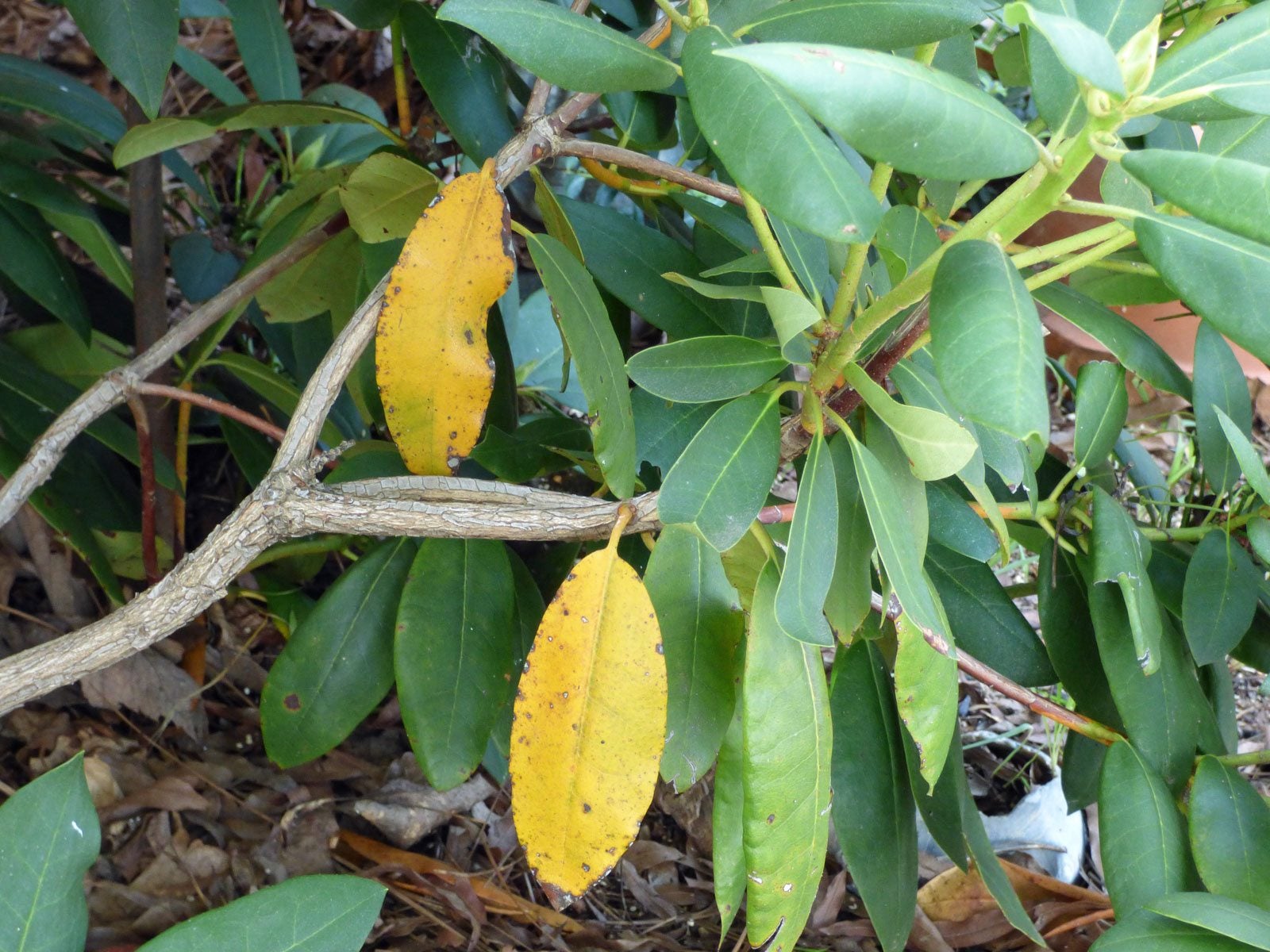Yellow Rhododendron Leaves: Why Are Leaves Turning Yellow On Rhododendron


You may baby your rhododendron, but the popular shrubs can’t cry if they are not happy. Instead, they signal distress with yellow rhododendron leaves. When you ask, “Why does my rhododendron have yellow leaves”, the answer could be anything from improper irrigation to incorrect planting to inappropriate soil. You’ll have to evaluate your cultural practices to determine the problem and take appropriate steps for treating yellowing rhododendrons.
Why Does My Rhododendron Have Yellow Leaves?
Before you begin, make sure that what you are seeing is not just leaf senescence – old leaves falling off at the end of their two or three year life. This happens just before winter or in summer drought. Yellow rhododendron leaves often represent the plant’s expression of dissatisfaction with its care. Rhodies are picky about the soil you plant them in and about how much water they like. If you see your rhododendron leaves turning yellow, review each and every element of the plant’s care. First, take a look at how well your soil drains. This shrub doesn’t do well in wet soil, and “wet feet” can cause leaves turning yellow on rhododendron. Give the plant a deep drink, then watch at how fast the water soaks into the soil. If your drainage is bad, transplant the shrub sooner rather than later to a location with well-drained soil. Test your soil’s acidity with a home pH tester. If your soil is alkaline, you’ve found one reason for rhododendron leaves turning yellow: a mineral deficiency causing chlorosis. These shrubs take up too much calcium and not enough iron in alkaline soils. Chlorosis is very likely when the yellowing is mostly between the veins of new leaves. Although it is possible to acidify the soil with sulfur, transplanting the shrub to a raised bed might be the best and quickest solution to rhododendron leaves turning yellow from chlorosis.
Treating Yellowing Rhododendrons
Another reason for yellow rhododendron leaves might be the way you planted the shrub. Rhododendrons should be planted with the root ball just at the soil surface. If you can’t feel the root ball in the soil, you have planted it too deeply. Replant at the proper level. This takes care of leaves turning yellow on rhododendron because of planting depth. Lack of water or food may also cause leaves turning yellow on rhododendron. You should give the plant fertilizer in late May to June. If you forgot this year, feed it now and, while you are at it, give it a good drink. If it perks up, you have found the problem. If none of these seem to describe your plant’s problem, ask yourself whether you have applied chemicals to its leaves lately. Misapplied chemicals can burn foliage, resulting in yellow rhododendron leaves.
Sign up for the Gardening Know How newsletter today and receive a free copy of our e-book "How to Grow Delicious Tomatoes".

Teo Spengler is a master gardener and a docent at the San Francisco Botanical Garden, where she hosts public tours. She has studied horticulture and written about nature, trees, plants, and gardening for more than two decades, following a career as an attorney and legal writer. Her extended family includes some 30 houseplants and hundreds of outdoor plants, including 250 trees, which are her main passion. Spengler currently splits her life between San Francisco and the French Basque Country, though she was raised in Alaska, giving her experience of gardening in a range of climates.